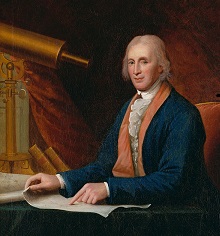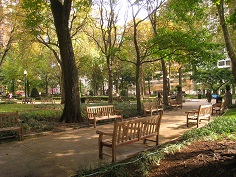Welcome to Rittenhouse Square
Rittenhouse Square, one of William Penn's original five, was known as the southwest square until 1825 when it was named for the astronomer-clockmaker, David Rittenhouse (1732-96), the great-grandson of William Rittenhouse, who built the first paper mill in America in Germantown.
David Rittenhouse was a member of the General Assembly and the State Constitutional Convention, and president of the Council of Safety. His survey of the Maryland-Pennsylvania boundary in 1763-64, to settle a dispute between the Penns and Lord Baltimore, was so accurate it was accepted and followed by Charles Mason and Jeremiah Dixon when they surveyed their famous line.
Professor of Astronomy at the University of Pennsylvania and inventor of the collimating telescope, he was also president of the American Philosophical Society and the first director of the United States Mint.
Rittenhouse Square has always denoted quality. The first house facing the Square was erected in 1840. During its next century the Square kept its residential quality. In 1913, the architect Paul Cret, who was one of the men responsible for Benjamin Franklin Parkway and many of its buildings, designed the Square's entrances, central plaza with the stone railings, pool and fountain. To have lived near or on the Square was a mark of prestige. Today, private homes are gone, but it still counts for something to live on the Square. There are several houses still standing, but they have been converted into apartments. With cooperative apartments and condominiums displacing private dwellings in the last three decades, some of the Old Guard still live on here — in these homes in the sky rather than family mansions.
Benjamin Franklin Parkway
- Welcome to Rittenhouse Square
- Holy Trinity (Rittenhouse Square)
- Rensselaer House
- Statuary in the Square
- Art Alliance
- Barclay Hotel
- Curtis Institute of Music
- Knapp Hall
- St. Mark's Episcopal Church
- Locust Street houses
- Sinkler Mansion
- Print Center & Cosmopolitan Club
- Tenth Presbyterian Church
- Thaw House
- Smedley Street
- Chadwick Street
- Plays and Players
- Victorian House
- Delancey Place
- Rosenbach Museum & Library
- Church for the New Jerusalem
- Mutter Museum
- First Unitarian Church of Philadelphia




